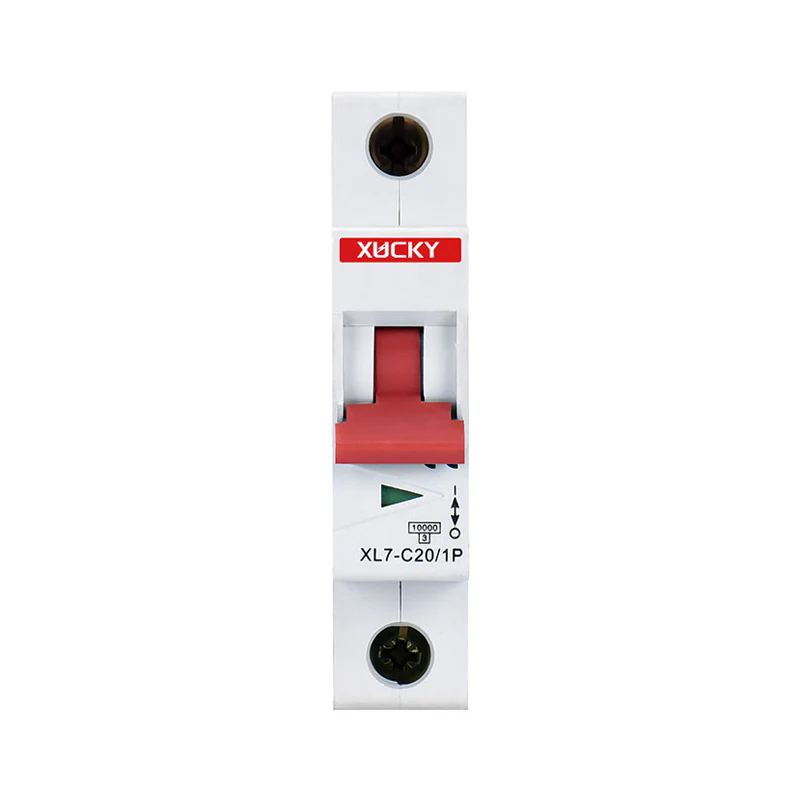Understanding Miniature Circuit Breakers: The Key to Electrical Safety
2025-03-04
In today’s modern world, electrical systems are the backbone of our homes, businesses, and industries. Ensuring these systems are safe and functional is of paramount importance. This is where miniature circuit breakers (MCBs) come into play. These small yet crucial devices protect electrical circuits from overloads and short circuits, preventing potential hazards like fires and equipment damage. In this blog, we’ll explore the significance of MCBs, how they work, and why they are essential for electrical safety.
What is a Miniature Circuit Breaker (MCB)?
A miniature circuit breaker (MCB) is an automatic electrical switch designed to protect an electrical circuit from damage caused by excess current. It is typically used in low-voltage electrical circuits (typically less than 1000V) and is a more reliable alternative to fuses. MCBs are widely used in residential, commercial, and industrial applications due to their ability to prevent electrical hazards by detecting faults and interrupting the power supply.
MCBs are called "miniature" because they are compact in size, making them ideal for modern electrical systems where space is often limited. Despite their small size, they are highly efficient and capable of providing robust protection.
How Does a Miniature Circuit Breaker Work?
An MCB works by detecting an overload or short circuit in an electrical system. When the current flowing through the circuit exceeds a certain preset level, the MCB is designed to break the circuit, thus stopping the flow of electricity and preventing potential damage.
There are two key mechanisms that enable the MCB to function:
1. Thermal Trip Mechanism (Overload Protection):
This mechanism is designed to protect the circuit from overloads. When the current flowing through the circuit exceeds the rated current for a prolonged period, the heat generated causes a bimetallic strip inside the MCB to bend. This bending action trips the switch and disconnects the power supply, preventing the circuit from overheating and causing damage.
2. Magnetic Trip Mechanism (Short Circuit Protection):
In the event of a short circuit, the MCB uses a magnetic trip mechanism. A sudden surge in current creates a magnetic field that causes a plunger to move rapidly, triggering the circuit breaker to open. This mechanism acts almost instantaneously, providing immediate protection against the dangerous consequences of a short circuit.
These two mechanisms work together to ensure both immediate and long-term protection, making MCBs reliable and effective for circuit safety.
Why are Miniature Circuit Breakers Important?
1. Safety First
The most important reason for using MCBs is safety. Overloads and short circuits can lead to electrical fires, equipment damage, and even injury. By automatically interrupting the electrical flow when dangerous conditions are detected, MCBs help minimize these risks. They provide an essential layer of protection to both the electrical system and the people using it.
2. Convenience and Reliability
Unlike fuses, which need to be replaced after tripping, MCBs can be easily reset once the issue has been resolved. This makes them a more convenient and reliable solution for electrical protection. Whether in homes, offices, or factories, MCBs offer peace of mind knowing that if a fault occurs, the circuit can be quickly restored to normal operation.
3. Prevents Equipment Damage
Electrical devices and appliances can be costly, and they are often sensitive to power fluctuations. MCBs help protect sensitive equipment by preventing power surges and interruptions that could damage them. For instance, computers, HVAC systems, and factory machinery all benefit from MCB protection.
4. Energy Efficiency
MCBs can contribute to energy efficiency in electrical systems. By preventing unnecessary disruptions caused by overloads and short circuits, MCBs help maintain a stable and consistent power supply. This reduces the chances of power outages and other issues that could lead to wasted energy.
5. Compliance with Electrical Standards
In many regions, electrical codes and regulations require the installation of MCBs to ensure the safety of electrical systems. Whether for new construction or renovation projects, MCBs play a critical role in complying with national and international safety standards.
Types of Miniature Circuit Breakers
MCBs come in different types to suit various applications and protection needs. They are typically classified based on their tripping characteristics:
1. Type B:
This type trips when the current exceeds 3 to 5 times the rated current. It is typically used for residential and light commercial applications, where the electrical load is relatively stable and predictable.
2. Type C:
Type C MCBs trip when the current exceeds 5 to 10 times the rated current. They are used for circuits with moderate inrush currents, such as motors and transformers. These MCBs are commonly found in industrial applications.
3. Type D:
Type D MCBs are designed for circuits with high inrush currents, such as large motors or equipment with heavy startup loads. These MCBs trip when the current exceeds 10 to 20 times the rated current.
4. Type K and Type Z:
These are specialized types of MCBs used for specific industrial or sensitive applications. Type K is used for circuits with high inrush currents, while Type Z is designed for circuits with very low inrush currents, providing extra sensitivity to low-level overloads.
Where are Miniature Circuit Breakers Used?
MCBs are used in a wide range of applications, from household electrical systems to industrial power grids. Some of the most common places where MCBs are used include:
- Residential Homes: MCBs are used to protect household circuits, including lighting, heating, and electrical outlets.
- Commercial Buildings: Offices, stores, and malls use MCBs to protect electrical systems that power lighting, HVAC units, and other essential equipment.
- Industrial Applications: Factories and manufacturing plants use MCBs to protect machinery, motors, and power distribution systems.
- Data Centers: Given the importance of uninterruptible power supply in data centers, MCBs play a critical role in protecting sensitive equipment.
Conclusion
Miniature circuit breakers are an essential component in modern electrical systems. Their ability to protect against overloads and short circuits makes them indispensable in ensuring the safety, reliability, and efficiency of electrical installations. Whether in homes, offices, or industrial settings, MCBs provide the peace of mind that comes with knowing your electrical system is safe from potential hazards.
With the wide variety of MCB types available, selecting the right one for a particular application is crucial to ensuring proper protection. As we continue to rely on electricity for everyday functions, the role of MCBs in preventing electrical hazards will only continue to grow, making them an integral part of any electrical setup.



